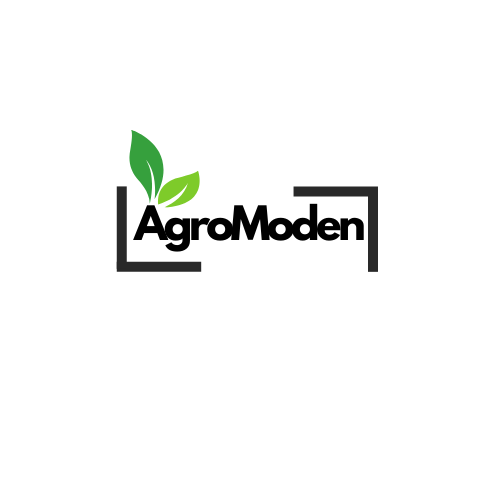Guide for Authors
General Submission Guidelines
Manuscripts must present original research in original research and advancements in the fields of plantation management, agricultural sciences, and technological innovations. All submissions will be double-blind peer reviewed. The abstract and conclusions section must also highlight what is new and/or novel in the paper. Submissions should:
Be written in clear English (consistent American/British usage)
Not exceed 20 pages (including figures/tables)
Follow JPA’s [Microsoft Word template]
Article Types
The following types of manuscripts on all topics within the scope of the journal (see separate list) are welcomed:
1. Research Articles
Full-length studies, containing original research work.
Required sections: Abstract, Introduction, Materials & Methods (field/lab protocols), Results, Discussion.
2. Technical Briefs
Concise reports on plantation and agrotechnology.
Max 12 pages with focused methodology.
3. Review Papers
Comprehensive analyses of emerging trends (e.g., AI in crop monitoring, biofertilizers)
Must include critical evaluation of ≥100 recent sources
Conflict of Interest
All authors are requested to disclose any actual or potential conflict of interest including any financial, personal or other relationships with other people or organizations within three years of beginning the submitted work that could inappropriately influence, or be perceived to influence, their work.
Referees
Please submit, with the manuscript, the names, addresses and e-mail addresses of three potential referees. Note that the editor retains the sole right to decide whether or not the suggested reviewers are used.
Structure
Research Articles
Research Articles presents original research that is expected to present a major advancement and contribution to the body of knowledge or the particular area. Research Articles follows the format provided in the guide to authors. The content includes an abstract, an introduction, materials and methods, results and discussion and conclusion. The supplementary materials that support the paper's conclusions are welcomed.
Style
As far as possible, manuscripts should consist of the following sections: Introduction, Materials and Methods, Results and Discussion, and Conclusion. Each section and sub-section should be numbered using the Arabic numerals. Please use S1 Units for all scientific and laboratory data.
Subdivision - Numbered Sections
Divide your article into clearly defined and numbered sections. Subsections should be numbered 1.1 (then 1.1.1, 1.1.2, ...), 1.2, etc. (the abstract is not included in section numbering). Use this numbering also for internal cross-referencing: do not just refer to 'the text'. Any subsection may be given a brief heading. Each heading should appear on its own separate line.
Title
Manuscripts should be headed by a concise title. Please include the full name(s) of the author(s), complete mailing address, telephone and fax numbers as well as e-mail address. In case of multiple authorship, please indicate the main author to whom all correspondence concerning the paper should be directed.
Author Names and Affiliations
Where the family name may be ambiguous (e.g., a double name), please indicate this clearly. Present the authors' affiliation addresses (where the actual work was done) below the names. Indicate all affiliations with a lower-case superscript letter immediately after the author's name and in front of the appropriate address. Provide the full postal address of each affiliation, including the country name and, if available, the e-mail address of each author.
Corresponding Author
Clearly indicate who will handle correspondence at all stages of refereeing and publication, also post-publication. Ensure that phone numbers (with country and area code) are provided in addition to the e-mail address and the complete postal address. Contact details must be kept up to date by the corresponding author.
Abbreviations
Define abbreviations that are not standard in this field in a footnote to be placed on the first page of the article. Such abbreviations that are unavoidable in the abstract must be defined at their first mention there, as well as in the footnote. Ensure consistency of abbreviations throughout the article.
Abstract
Abstracts should not more than 200 words and written in English. The abstract should not only indicate the subject and scope of the paper but also summarize the principal results and major conclusion along with at least five (5) keywords that could be useful for information - retrieval purposes. References should be avoided, but if essential, they must be cited in full, without reference to the reference list. Also, non-standard or uncommon abbreviations should be avoided, but if essential they must be defined at their first mention in the abstract itself.
Graphical Abstract
A graphical abstract (5 × 13 cm) is optional and should summarize the contents of the article in a concise, pictorial form designed to capture the attention of a wide readership online. Authors must provide images that clearly represent the work described in the article.
Introduction
State the objectives of the work and provide an adequate background, avoiding a detailed literature survey or a summary of the results.
Methods and Protocols
Methods and Protocols are proposal of new or an overviews of recent technical and methodological developments. The method described may either be completely new, or may offer a better version of an existing method. Methods must be proven by its validation, its application to an important research question and results illustrating its performance in comparison to existing approaches. Articles should possess thorough assessments of methodological performance and comprehensive technical descriptions that facilitate immediate application by researchers in the field.
Special Formatting Requirements
Agricultural Data Presentation
Use FAO measurement standards (e.g., t/ha for yields, mm/day for irrigation)
GPS coordinates required for field studies
Chemical formulations: CAS registry numbers mandatory
Tables/Figures
All tables should be kept simple and clear, and should be referred to in the text. They should be numbered, titled, and typed using double spacing on separate pages in the order of which they are referred to in the text. Place footnotes to tables below the table body and indicate them with superscript lowercase letters.
Example caption:
Table 3: Yield comparison of hybrid rice varieties under drip irrigation (2024 trial)
Illustrations
Illustrations including diagrams and graphs should be sharp, noise free and of good contrast. They should accompany the manuscript on separate sheets and numbered consecutively in the same order as they are referred to in the text. Line drawings should be in black ink on a white background and lettering size must be large enough to permit legible reduction whenever necessary. All photographs submitted must be of good quality and printed on glossy paper. The author’s name, short title of the paper and figure number must be written on the reverse side of each illustration submitted.
Caption for Figure is as follow:
Figure 3: Yield comparison of hybrid rice varieties under drip irrigation (2024 trial)
Equations
Crop growth models should use notation from Horticultural Science
LAI=(Leaf Area)/(Ground Area)
Results
Results should be clear and concise.
Discussion
This should explore the significance of the results of the work, not repeat them. A combined Results and Discussion section is often appropriate. Avoid extensive citations and discussion of published literature.
Conclusions
The main conclusions of the study may be presented in a short Conclusions section, which may stand alone or form a subsection of a Discussion or Results and Discussion section.
References
Acknowledgements
A brief acknowledgment should be included at the end of the manuscripts, before the list of references. List here those individuals who provided help during the research (e.g., providing language help, writing assistance or proof reading the article, etc.).
Appendices
If there is more than one appendix, they should be identified as A, B, etc. Formulae and equations in appendices should be given separate numbering: Eq. (A.1), Eq. (A.2), etc.; in a subsequent appendix, Eq. (B.1) and so on. Similarly for tables and figures: Table A.1; Fig. A.1, etc.
Color artwork
Please make sure that artwork files are in an acceptable format (TIFF (or JPEG), EPS (or PDF), or MS Office files) and with the correct resolution.
Figure Captions
Ensure that each illustration has a caption. Supply captions separately, not attached to the figure. A caption should comprise a brief title (not on the figure itself) and a description of the illustration. Keep text in the illustrations themselves to a minimum but explain all symbols and abbreviations used.
Reference Style
Text:
Indicate only first author’s name with year in a brackets in line with the text.
(John, 2000)
(Fadzli and Ali, 2009)
(Koay et al., 2014)
Reference list (APA style):
Reference to a journal publication:
Aloysius, N.; Ananda, J.; Mitsis, A.; Pearson, D. Why People Are Bad at Leftover Food Management? A Systematic Literature Review and a Framework to Analyze Household Leftover Food Waste Generation Behavior. Appetite 2023, 186, 106577, doi:10.1016/j.appet.2023.106577.
Reference to a conference proceeding:
Misran, A.; Yi, T.X. “Musang King” Durian: Volatile Organic Compound Ester Compositions and Their Changes during Long-Term Frozen Storage. In Proceedings of the AIP Conference Proceedings; 2023; Vol. 2616.
Reference to a book:
Turner, P. D., & Gillbanks, R. A. (1974). Oil palm cultivation and management.
Submission Checklist
The following list will be useful during the final checking of an article prior to sending it to the journal for review. Please consult this Guide for Authors for further details of any item. Ensure that the following items are present:
Cover Letter justifying agricultural significance
Supplementary Files (if applicable):
Raw agronomic data (CSV format)
Multispectral crop imagery (GeoTIFF preferred)
3. One author has been designated as the corresponding author with contact details:
E-mail address
Full postal address
Phone numbers
4. All necessary files have been uploaded, and contain:
Keywords
All figures and captions
All tables (including title, description, footnotes)
5. Further considerations
Manuscript has been 'spell-checked' and 'grammar-checked'
References are in the correct format for this journal
All references mentioned in the Reference list are cited in the text, and vice versa
Permission has been obtained for use of copyrighted material from other sources
Color figures are clearly marked as being intended for color reproduction on the Web
Open Access Policy
JPA is free for authors, researchers, academicians, postgraduate students and visitors.

